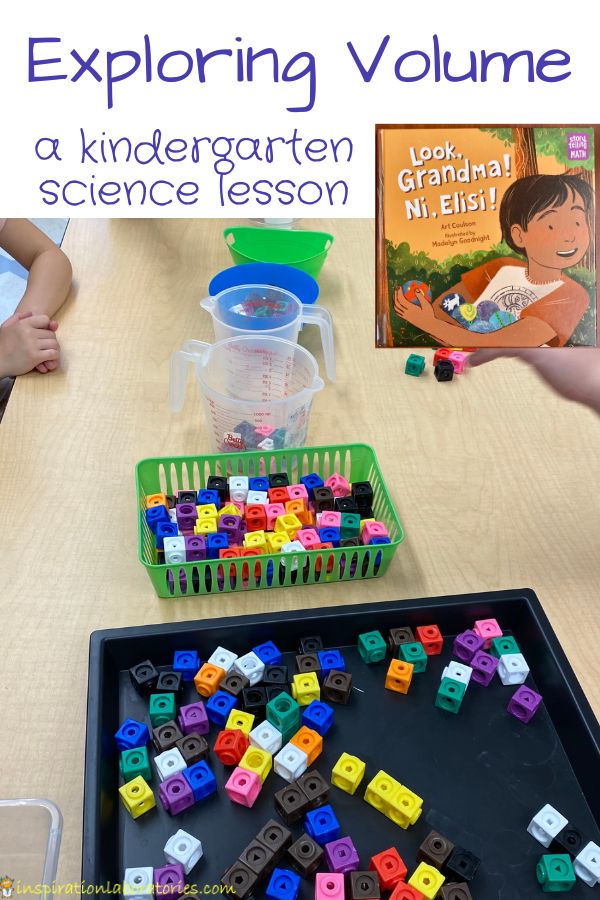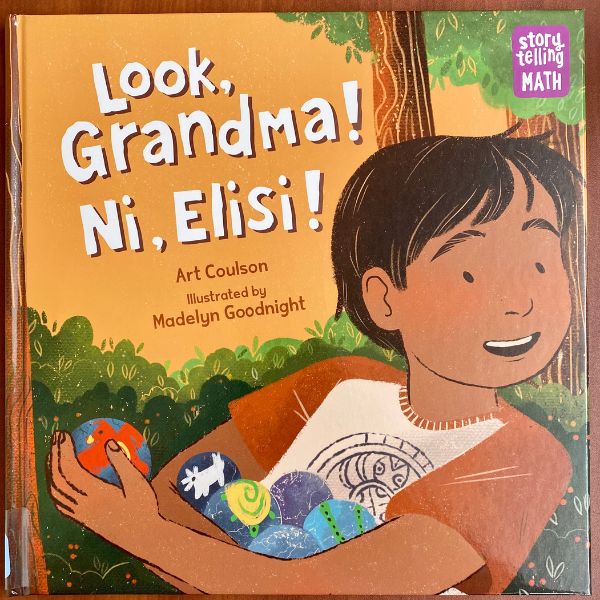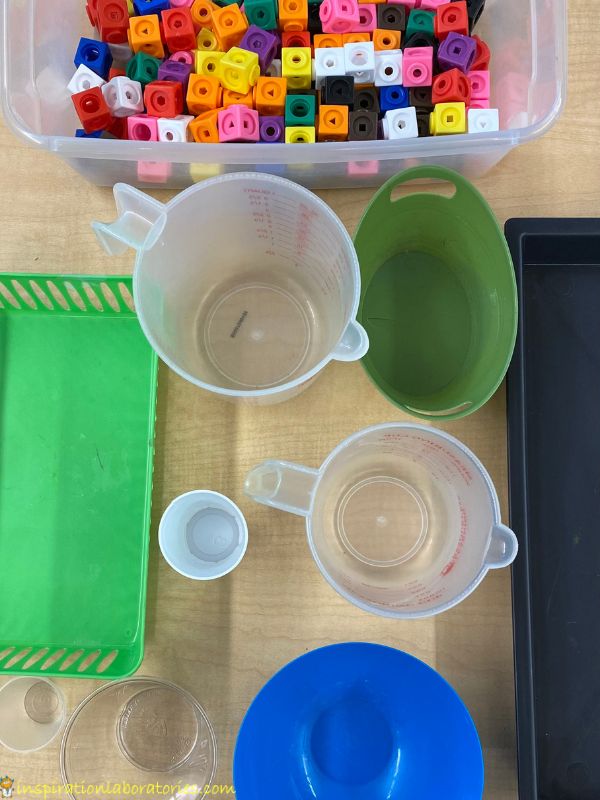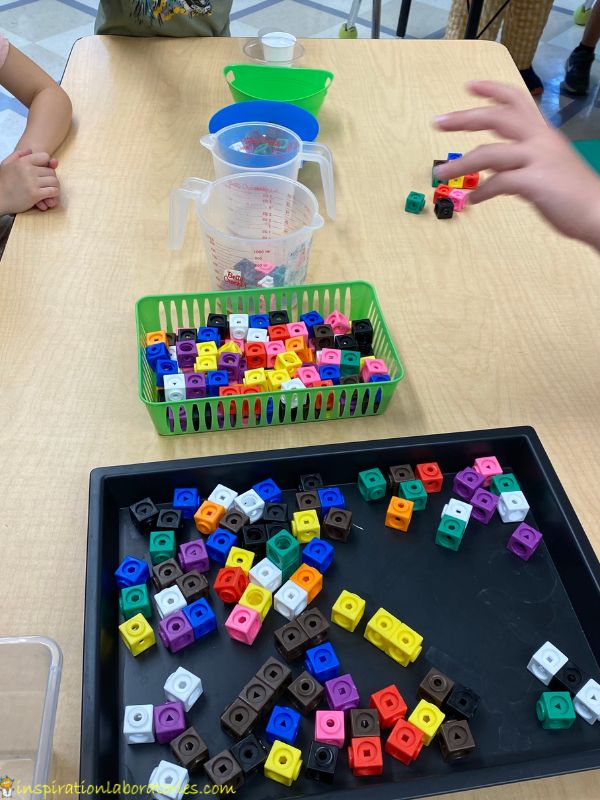Exploring Volume – a Math and Science Lesson Inspired by Look Grandma! Ni Elisi!
Can you tell me which container holds more? I posed this question to my kindergarteners after reading the book, Look, Grandma! Ni, Elisi! by Art Coulson. The book inspired a math and science lesson exploring volume. I get commissions for purchases made through the affiliate links in this post.

Look, Grandma! Ni, Elisi!

Look, Grandma! Ni, Elisi! by Art Coulson is the story of a young boy named Bo. Bo is trying to find the perfect container to showcase his hand-painted marbles at the festival for the Cherokee National Holiday. Bo searches through the house and tests out many different containers. When he thinks he’s found the right one, he excitedly runs to show his grandmother. She tells him the container is much too large for their booth at the festival. He needs to look for a smaller container that will fit.
The story includes Cherokee words throughout as Bo and his family speak to each other in a mix of Cherokee and English. The final pages illustrate what their booth at the festival holds – the hand-painted marbles plus many more items that were made by Bo’s family.
Which Container Holds More?
I showed my kindergarten science students two containers – a jar full of MathLink Cubes and an empty lunch container.

I asked them to think to themselves (and not say anything out loud) which container holds more. Then, I asked them to raise their hands if they thought the jar could hold more. Hands down. Raise your hand if you think the bowl can hold more.
I called on a student to tell me how we would know the answer – how could we test to see if we were right.
I asked for the explanation in 4 different classes and got 4 different approaches to a correct response. Basically, they told me to pour the cubes from the jar into the bowl. If the bowl overflowed or couldn’t fit all of the cubes, then we knew the jar could hold more. If there was still space in the bowl, or room for more cubes, then we knew the bowl could hold more.
Sort the Containers from Smallest to Largest
I challenged my students to sort the containers from smaller to largest based on how much they could hold. The container that could hold the least would go first in line. The container that could hold the most would go last in the line.

I reminded them how to test to see which container could hold more. They should fill one container with cubes. Then pour those cubes into another container and compare.

I had my student work in groups of 4. You could provide enough materials for them to work in pairs or even individually. This challenge would also make a great math or science center.
Most of my kindergartners were engaged in this challenge. They were sorting the containers and lining them up appropriately. Some of my students were too tempted by the ability to pour cubes from one container to another that they never really got to the comparing stage. They were still exploring volume and observing which containers could hold more. They just didn’t formalize and vocalize their findings.

When students completed the challenge, they were allowed to freely explore the materials. Many of them chose to sort the cubes by color.
More Ways to Explore Volume
V is for Volume – compare short vs. tall containers and containers of similar sizes in this activity that uses water
Exploring Volume – use measuring containers from Learning Resources to explore volume and practice measuring
Snow Science Explorations – use snow to explore volume and weight.
Measuring and Pouring Water – scroll down to see the questions to ask your kids as they play

Leave a Reply